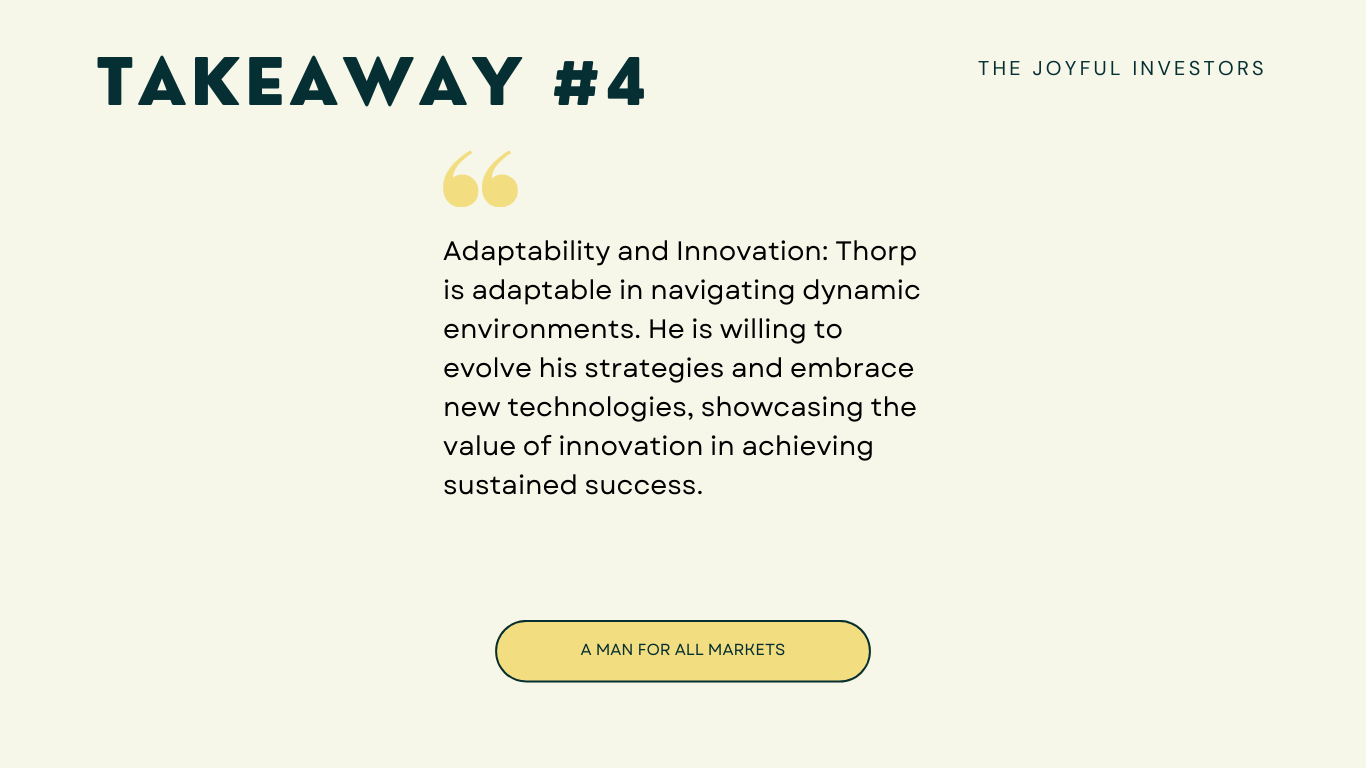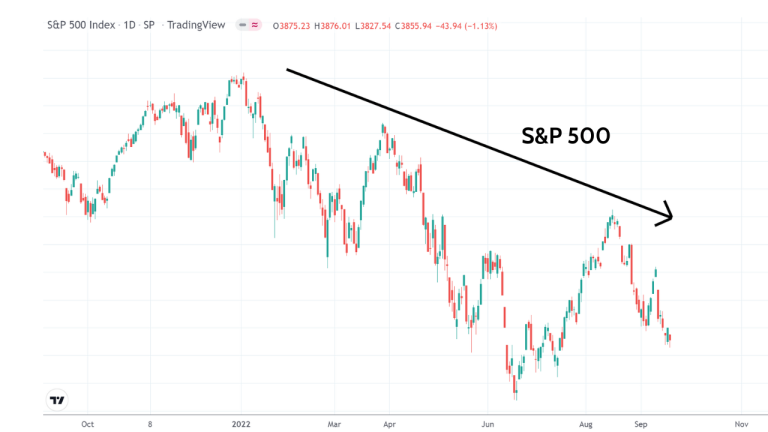
Kathy
in Memos & Musings · 6 min read
What is the book about?
“A Man for All Markets: From Las Vegas to Wall Street” by Edward O. Thorp is a captivating memoir that chronicles Thorp’s remarkable journey from a mathematics professor to a groundbreaking investor and professional gambler. The book takes readers on a riveting exploration of Thorp’s life, spanning his early academic pursuits to his groundbreaking discoveries in the worlds of gambling and finance.
Thorp begins by recounting his academic endeavors, highlighting his passion for mathematics and his early fascination with probability theory. He shares insights into his groundbreaking work on card counting in blackjack, which revolutionized the gambling industry and laid the foundation for his later successes in financial markets. From his time spent in Las Vegas to his forays into Wall Street, Thorp provides a candid account of his adventures, successes, and challenges along the way.
Throughout the book, Thorp intertwines personal anecdotes with profound insights into mathematics, risk management, and investment strategies. He offers valuable lessons on the importance of discipline, ethics, and continuous learning in achieving success in both gambling and investing. With wit, wisdom, and humility, Thorp’s story serves as an inspiring testament to the power of innovation, determination, and intellect in overcoming adversity and achieving remarkable feats in the realms of probability and finance.
Here are some takeaways and possible learning points:
Takeaway #1
Probability and Mathematics: Thorp’s journey underscores the significance of probability theory and mathematics in both gambling and investing. He leverages mathematical models to gain an edge, whether counting cards in blackjack or developing investment strategies.
Thorp’s application of mathematical principles transcended the confines of the casino floor, extending into the world of finance and investment. Armed with his mathematical acumen, Thorp developed innovative investment strategies that relied on statistical analysis and quantitative models to identify mispriced securities and exploit market inefficiencies. By leveraging mathematical models and probability theory, Thorp was able to gain a significant edge in financial markets, outperforming traditional investment approaches and achieving remarkable success.
Thorp’s journey serves as a compelling testament to the transformative power of mathematics in shaping both gambling and investing landscapes. His ability to apply mathematical rigor to complex problems revolutionized these fields, paving the way for new approaches and strategies that continue to influence practitioners today. By harnessing the predictive power of probability and mathematics, Thorp not only reshaped our understanding of risk and reward but also redefined the possibilities for achieving success in highly uncertain environments.
Takeaway #2
Risk Management: Throughout the book, Thorp emphasizes the importance of risk management. He advocates for strategies that minimize downside risk while maximizing potential returns in achieving long-term success.
Thorp advocates for strategies that prioritize minimizing downside risk while simultaneously seeking to maximize potential returns. This approach aligns with the core tenets of modern portfolio theory, which emphasizes diversification and asset allocation as key mechanisms for mitigating risk. By spreading investments across a diverse range of assets and asset classes, individuals can reduce their exposure to any single risk factor or market event, thereby safeguarding their portfolios against significant losses.
Moreover, Thorp highlights the importance of maintaining a long-term perspective when it comes to risk management. He advises against succumbing to short-term fluctuations or succumbing to the allure of high-risk, high-reward strategies that may yield quick profits but also carry substantial downside risk. Instead, Thorp advocates for a disciplined approach to risk management that prioritizes consistency and sustainability over short-term gains.
Thorp’s emphasis on risk management underscores the fundamental principle that success in any endeavor, whether it be playing blackjack or navigating financial markets, requires careful consideration of risk and reward.
Takeaway #3
Market Inefficiencies: By identifying mispriced securities, he demonstrates how investors can capitalize on market inefficiencies to generate alpha.
One example of market inefficiencies that Thorp famously exploited is his work on card counting in blackjack. By applying probability theory and mathematical calculations, Thorp was able to gain an edge over the house and consistently beat the odds in casino games. Similarly, in the realm of investing, Thorp leverages quantitative analysis to identify undervalued securities and opportunities for arbitrage, where discrepancies in prices between different markets or securities can be exploited for profit.
Thorp’s success in capitalizing on market inefficiencies underscores the importance of disciplined research, analytical rigor, and a contrarian mindset in achieving investment success. By diligently identifying mispriced securities and having the patience to wait for the market to recognize their true value, investors can potentially outperform the broader market and achieve superior investment returns over the long term. Overall, Thorp’s insights into market inefficiencies offer valuable lessons for investors seeking to navigate the complexities of financial markets and unlock opportunities for alpha generation.
Takeaway #4
Adaptability and Innovation: Thorp is adaptable in navigating dynamic environments. He is willing to evolve his strategies and embrace new technologies, showcasing the value of innovation in achieving sustained success.
Edward O. Thorp’s journey is a testament to the importance of adaptability and innovation in navigating dynamic environments, whether in the realm of gambling or investing. Thorp’s ability to adapt to changing circumstances and embrace new technologies underscores his resilience and ingenuity in the face of uncertainty.
Throughout his career, Thorp has demonstrated a willingness to evolve his strategies and techniques in response to shifting market conditions and technological advancements. In the realm of gambling, he pioneered the use of mathematical models and computer simulations to gain an edge over the house, revolutionizing the way card games like blackjack were played. Thorp’s innovative approach to gambling not only challenged conventional wisdom but also laid the groundwork for future advancements in probability theory and quantitative finance.
Similarly, in the world of investing, Thorp’s adaptability and willingness to embrace new technologies have been key drivers of his success. He has leveraged computer algorithms, statistical analysis, and quantitative models to identify undervalued securities and exploit market inefficiencies, showcasing the value of innovation in achieving sustained success in financial markets.
Thorp’s ability to adapt and innovate serves as a valuable lesson for investors seeking to navigate the complexities of modern finance. In an era of rapid technological advancement and market disruption, the ability to embrace change and leverage new technologies is essential for staying ahead of the curve and capitalizing on emerging opportunities.
Takeaway #5
Psychology of Investing: Thorp delves into the psychological aspects of investing, discussing the importance of emotional discipline when making investment decisions. He shares insights into how biases and emotions can influence investment behavior.
Thorp delves into the various cognitive biases and emotional tendencies that can cloud judgment and influence investment behavior. From fear and greed to overconfidence and herd mentality, Thorp elucidates how these psychological factors can lead investors astray, causing them to make irrational decisions and deviate from their long-term investment strategies.
Moreover, Thorp emphasizes the significance of self-awareness and emotional intelligence in overcoming these cognitive biases and maintaining discipline in the face of market volatility. By cultivating mindfulness and practicing emotional regulation, investors can mitigate the impact of emotions on their decision-making process and make more rational, level-headed investment choices.
Thorp’s insights into the psychology of investing serve as a sobering reminder of the inherent challenges and pitfalls that investors must navigate in the pursuit of financial success. By understanding the psychological factors that influence investment behavior and developing strategies to counteract their effects, investors can enhance their decision-making capabilities and improve their overall investment outcomes. In essence, Thorp’s exploration of the psychology of investing underscores the importance of emotional discipline and self-awareness in achieving long-term investment success in volatile and unpredictable markets.
In summary, we also have some actionable advice that we believe investors may benefit from:
Leverage on technical analysis for better risk-adjusted returns
Leveraging technical analysis can be a powerful tool for investors seeking to enhance their risk-adjusted returns in financial markets. Technical analysis involves analyzing historical price data, volume, and other market indicators to forecast future price movements and identify potential trading opportunities. By applying technical analysis techniques, investors can gain valuable insights into market trends, patterns, and momentum, enabling them to make more informed investment decisions.
One of the key benefits of technical analysis is its ability to provide investors with a systematic approach to identifying entry and exit points in the market. Through the use of various technical indicators, investors can identify potential buying or selling opportunities based on price momentum and market sentiment. By incorporating these indicators into their investment strategy, investors can effectively manage risk and optimize their portfolio returns.
Furthermore, technical analysis can help investors identify key support and resistance levels in the market, which can serve as important reference points for managing risk. By utilizing technical analysis to establish appropriate risk management strategies, investors can limit their downside exposure and protect their capital in the event of adverse market movements.
Additionally, technical analysis can be particularly useful in identifying trend reversals and market turning points. By recognizing early signs of potential trend changes, investors can adjust their investment strategies accordingly and capitalize on emerging opportunities. This proactive approach to risk management can help investors avoid significant losses and maximize their risk-adjusted returns over time.
Overall, leveraging technical analysis can provide investors with valuable insights into market dynamics and trends, helping them make more informed investment decisions and achieve better risk-adjusted returns. By incorporating technical analysis techniques into their investment strategy, investors can effectively manage risk, optimize portfolio performance, and navigate volatile market conditions with confidence.
If you would like to attend our workshop on Technical Analysis – “How to identify appropriate prices to buy and sell stock” and understand how it can improve your investing performance, click here.
Improving your odds for success as an investor
For quite some time, we’ve been emphasizing the importance of improving your odds for success as an investor. This key ingredient has enabled us to consistently outperform the markets regardless of the market direction. It entails adopting a multifaceted approach that incorporates various strategies and principles aimed at maximizing returns while minimizing risks. The video below provides further elaboration on this topic.
















Joyful Reviews is a series by The Joyful Investors where we will be sharing our thoughts and insights on books or films that focus on personal development and investing knowledge to help everyone become a more confident and thoughtful investor. As an avid reader and passionate learner, we believe that continuous education and self-improvement are key to success in any area of life, and especially in the world of investing.



About Kathy
Co-Founder of The Joyful Investors and Co-CIO of InvestingNote Portfolio. I graduated with a degree in Economics in National University of Singapore (NUS). My previous experience with traders at the Merrill Lynch enable me to realize many counter-intuitive truths about how the financial markets work and to uncover the challenges faced by many new investors. Investing can be astoundingly simple, and my goal is to make financial education accessible and easy to understand for everyone.
Important Information
This document is for information only and does not constitute an offer or solicitation nor be construed as a recommendation to buy or sell any of the investments mentioned. Neither The Joyful Investors Pte. Ltd. (“The Joyful Investors”) nor any of its officers or employees accepts any liability whatsoever for any loss arising from any use of this publication or its contents. The views expressed are solely the opinions of the author as of the date of this document and are subject to change based on market and other conditions.
The information provided regarding any individual securities is not intended to be used to form any basis upon which an investment decision is to be made. The information contained in this document, including any data, projections and underlying assumptions are based upon certain assumptions and analysis of information available as at the date of this document and reflects prevailing conditions, all of which are accordingly subject to change at any time without notice and The Joyful Investors is under no obligation to notify you of any of these changes.
· · ·
Have you enjoyed this article? We’d be grateful if you would share this useful content to your friends who may benefit from it as well.



